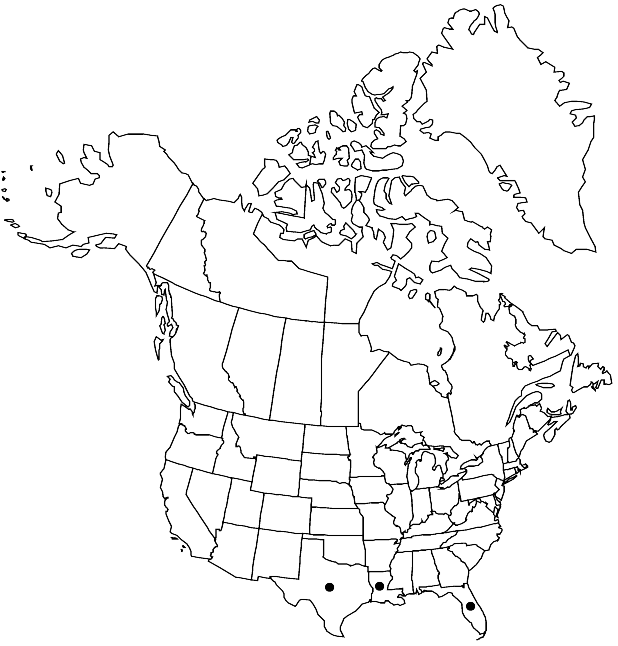Difference between revisions of "Cakile constricta"
Contr. Gray Herb. 205: 131. 1974.
FNA>Volume Importer |
imported>Volume Importer |
||
| (3 intermediate revisions by 2 users not shown) | |||
| Line 6: | Line 6: | ||
|place=205: 131. 1974 | |place=205: 131. 1974 | ||
|year=1974 | |year=1974 | ||
| + | }} | ||
| + | |special_status={{Treatment/ID/Special_status | ||
| + | |code=E | ||
| + | |label=Endemic | ||
}} | }} | ||
|basionyms= | |basionyms= | ||
| Line 32: | Line 36: | ||
-->{{#Taxon: | -->{{#Taxon: | ||
name=Cakile constricta | name=Cakile constricta | ||
| − | |||
|authority=Rodman | |authority=Rodman | ||
|rank=species | |rank=species | ||
| Line 46: | Line 49: | ||
|publication title=Contr. Gray Herb. | |publication title=Contr. Gray Herb. | ||
|publication year=1974 | |publication year=1974 | ||
| − | |special status= | + | |special status=Endemic |
| − | |source xml=https:// | + | |source xml=https://bitbucket.org/aafc-mbb/fna-data-curation/src/2e0870ddd59836b60bcf96646a41e87ea5a5943a/coarse_grained_fna_xml/V7/V7_635.xml |
|tribe=Brassicaceae tribe Brassiceae | |tribe=Brassicaceae tribe Brassiceae | ||
|genus=Cakile | |genus=Cakile | ||
Latest revision as of 22:35, 5 November 2020
Annuals. Stems erect, 1–3 dm. Cauline leaves: blade ovate to spatulate, margins crenate, dentate, or sinuate (not pinnatifid). Racemes usually 1–2 dm, rarely longer; rachis not geniculate. Fruiting pedicels 2.5–7 mm. Flowers: sepals ca. 4 mm, lateral pair not saccate basally; petals white or lavender, 5.3–8 × 1.3–2.6 mm, claw distinct. Fruits (terete or 4-angled), lanceoloid, 14–22 × 3–4 mm, (constricted at articulation of segments); proximal segment terete, long-cylindrical, (5–8.5 mm); terminal segment fusiform, (9–15 mm, beak conic), apex acute. Seeds: cotyledons accumbent. 2n = 18.
Phenology: Flowering spring–fall.
Habitat: Sandy shores
Elevation: ca. 0 m
Distribution

Fla., La., Tex.
Discussion
Cakile constricta is disjunct in Florida (not known from the Keys or southwestern Florida, where immature plants of C. lanceolata subspp. fusiformis and pseudoconstricta may be confused with it).
Selected References
None.